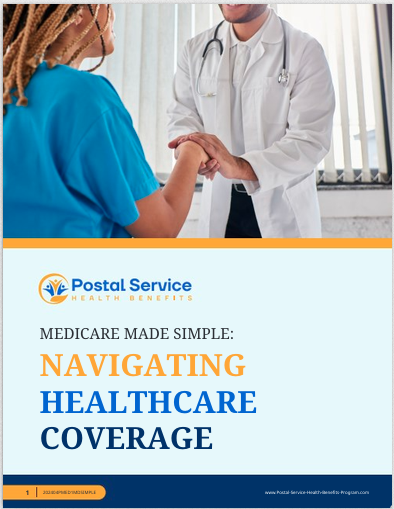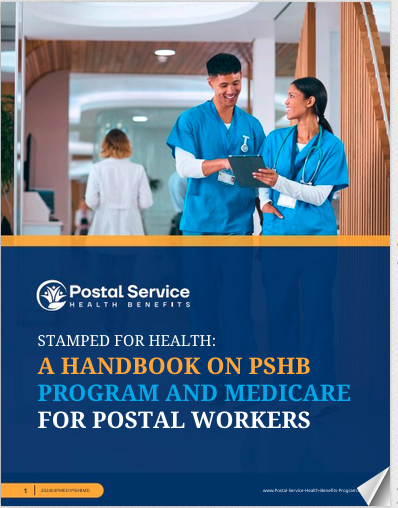Key Takeaways
-
The Postal Service Health Benefits (PSHB) program offers tailored health insurance options specifically for USPS employees, annuitants, and eligible family members.
-
Understanding plan components such as premiums, deductibles, copayments, and Medicare integration is essential to selecting the right coverage for your needs.
Understanding the PSHB Program
The Postal Service Health Benefits (PSHB) program has replaced the Federal Employees Health Benefits (FEHB) program for USPS employees and annuitants. This switch provides a more focused and streamlined health insurance framework tailored to the needs of postal workers and their families. Whether you’re a current employee, a retiree, or a family member, navigating the process of selecting a health plan may initially seem overwhelming, but with the right information, it becomes manageable.
PSHB plans cater to diverse coverage requirements with enrollment options like Self Only, Self Plus One, and Self and Family. Each of these plans aims to address varied household structures and medical needs while also accommodating different financial situations. The program’s design ensures that USPS employees and their families have access to affordable and comprehensive healthcare.
Furthermore, the transition from FEHB to PSHB aligns with the unique challenges USPS employees face, including fluctuating schedules and physical job demands. Understanding the nuances of PSHB plans is key to optimizing your health coverage and achieving peace of mind about your medical care. Let’s explore what PSHB has to offer and how to maximize its benefits.
Exploring Your PSHB Coverage Options
Different Types of Coverage
PSHB plans offer three primary enrollment types:
-
Self Only: This option is suited for single USPS employees or retirees who do not need dependent coverage. It ensures affordable premiums and straightforward healthcare management for individuals.
-
Self Plus One: Designed for you and one eligible family member, such as a spouse or a dependent child, this type of coverage strikes a balance between cost-effectiveness and sufficient benefits for small households.
-
Self and Family: For USPS employees or retirees with larger households, this plan provides comprehensive coverage for multiple dependents, ensuring every family member’s health needs are met.
Evaluating your household’s size and anticipated medical needs is critical to selecting the best enrollment type. Each type comes with unique premium structures and benefits that reflect the number of individuals covered.
Network Choices: In-Network vs. Out-of-Network
Understanding your provider network is one of the most important aspects of PSHB coverage. Plans typically categorize providers into two groups:
-
In-Network Providers: These healthcare providers have established agreements with your plan to offer services at reduced rates. Choosing in-network providers minimizes your out-of-pocket costs through lower copayments and coinsurance.
-
Out-of-Network Providers: These providers do not have negotiated agreements with your insurer, which often results in significantly higher costs. While out-of-network options might offer flexibility, they are typically less economical.
For individuals living in rural or underserved areas, it is crucial to confirm that your plan’s network includes providers within a reasonable distance. If you anticipate requiring specialized medical care, ensure the plan’s network encompasses these services.
Premiums, Deductibles, and Copayments
Healthcare costs under PSHB are structured around these key components:
-
Premiums: The monthly cost of maintaining your health coverage. These vary depending on the enrollment type and coverage level selected.
-
Deductibles: The amount you must pay out-of-pocket before your plan begins covering eligible healthcare expenses.
-
Copayments: Fixed fees for specific services, such as $20 for a primary care visit or $100 for an emergency room visit. Copayments make it easier to predict costs for routine services.
Balancing these factors is essential to budget effectively. For example, if you foresee frequent doctor visits or medical procedures, selecting a plan with higher premiums but lower deductibles and copayments might save you money in the long run.
Coordination with Medicare
Medicare Requirements for PSHB Participants
If you’re a Medicare-eligible retiree, the PSHB program requires enrollment in Medicare Part B to maintain comprehensive coverage. However, there are exemptions for individuals who retired on or before January 1, 2025.
For many retirees, coordinating Medicare with PSHB coverage ensures maximum benefits and minimizes overall costs. Ensuring compliance with Medicare Part B enrollment deadlines is critical to maintaining your health coverage without gaps or penalties.
Benefits of Medicare Integration
The integration of Medicare with PSHB plans offers several advantages:
-
Reduced Out-of-Pocket Costs: Enrollees benefit from lower deductibles and copayments, effectively reducing financial burdens.
-
Prescription Drug Savings: Automatic enrollment in a Medicare Part D Employer Group Waiver Plan (EGWP) simplifies medication management and cost control.
-
Enhanced Benefits: Access to a broader network of providers and coverage for additional services ensures comprehensive healthcare support.
Coordinating these two programs not only enhances the efficiency of your healthcare but also ensures cost predictability.
Evaluating Your Healthcare Needs
Assessing Family Medical Histories
When choosing a plan, understanding your family’s medical history can guide you to the most suitable option. Consider the following:
-
Are there any chronic illnesses or ongoing treatments requiring frequent visits to specialists?
-
Do family members have upcoming major medical needs, such as planned surgeries or maternity care?
-
How often will you or your dependents need preventive services, like vaccinations and screenings?
Anticipating Future Healthcare Costs
Projecting your healthcare needs over the next year can simplify the decision-making process. Review previous medical bills and out-of-pocket expenses to estimate future usage. Keep in mind that:
-
Higher premiums often correspond to lower deductibles and copayments.
-
If you anticipate minimal healthcare use, a lower-premium, higher-deductible plan might be more economical.
By aligning your expected healthcare usage with the plan’s cost structure, you can achieve both comprehensive coverage and cost-efficiency.
The Enrollment Process
Key Dates
The annual Open Season for PSHB runs from mid-November to mid-December, providing a window for employees and retirees to select or modify their plans. Any changes made during this period take effect on January 1 of the following year. Outside of this timeframe, plan adjustments are only allowed in the event of a Qualifying Life Event (QLE), such as marriage, childbirth, or retirement.
Steps to Enroll
-
Compare Your Options: Use the PSHB plan comparison tool to explore available options.
-
Gather Necessary Documents: Ensure you have your USPS employee or annuitant ID and dependent details ready.
-
Enroll Online or By Mail: Access the PSHB enrollment portal or submit your paperwork by mail.
Remember to double-check your choices before submitting, as making informed decisions during Open Season ensures you avoid coverage gaps.
Common Pitfalls to Avoid
Overlooking Provider Networks
Choosing a plan without verifying its network can lead to higher costs and limited access to care. Always confirm that your preferred doctors and facilities are included in the plan’s network.
Ignoring Annual Notices
Each year, PSHB plans may adjust premiums, benefits, or coverage rules. Reviewing your Annual Notice of Change (ANOC) ensures you stay informed about updates and can adapt accordingly.
Underestimating Total Costs
It’s easy to focus solely on monthly premiums, but don’t overlook other costs like deductibles, copayments, and coinsurance. Evaluate the total financial impact to avoid unexpected expenses.
Making the Most of Your PSHB Plan
Preventive Care Services
Take full advantage of covered preventive services, including annual physicals, wellness exams, and routine screenings. These services are often provided at no additional cost and can help detect issues early.
Savings Accounts for Healthcare
If your plan includes Health Savings Accounts (HSAs) or Flexible Spending Accounts (FSAs), contribute to them to reduce taxable income and prepare for unexpected medical expenses. For 2025, HSA contributions are capped at $4,300 for individuals and $8,550 for families, with an additional $1,000 catch-up contribution for those over 55.
Managing Prescription Costs
Ensure your plan’s formulary covers your medications. Take advantage of programs like Medicare’s $2,000 prescription drug cap to manage long-term costs effectively.
Staying Informed
Regular Updates
Sign up for PSHB newsletters and check official communications frequently to stay current on changes. Knowing about plan updates or enhancements can help you make proactive decisions.
Asking Questions
If you have any doubts, don’t hesitate to reach out to PSHB customer service. A clear understanding of your benefits ensures you can make the most of your coverage.
Your Health Coverage, Simplified
Navigating the PSHB program becomes straightforward with the right approach. By evaluating your healthcare needs, understanding plan details, and staying informed about updates, you can secure coverage that matches your requirements and budget. The program’s tailored offerings empower USPS employees and their families to prioritize health and well-being.






